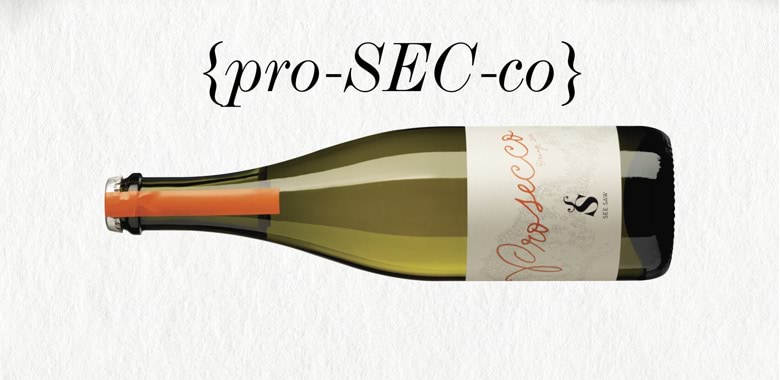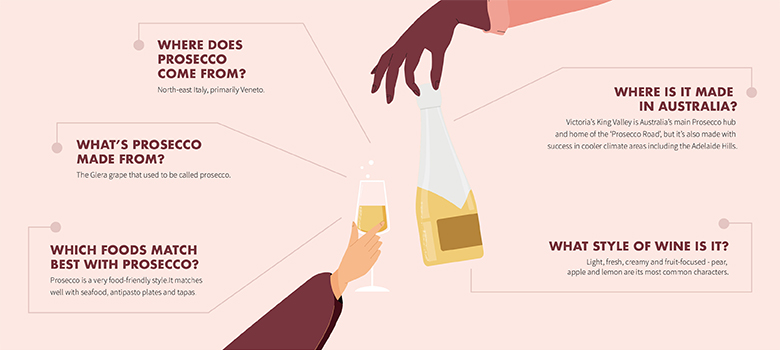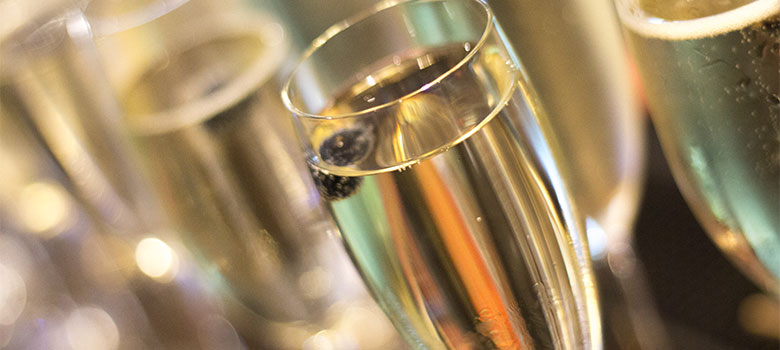
Wine
What is Prosecco?
Prosecco, the popular fizz from Italy, is quickly taking over Champagne as the world’s most loved Sparkling white wine. Low in alcohol and packed with delightful bubbles and fresh, zingy characters, it’s the perfect drop for both casual and celebratory occasions including brunch, alfresco picnics, or dinner and cocktails with friends.
So, what is special about Prosecco? Is Prosecco just Champagne? Is Prosecco dry or sweet? Let’s take a plunge into the bubbles and find out all there is to know about this fabulous fizzy drop.
Shop Prosecco
WHAT IS PROSECCO?
One of Australia’s best-selling Sparkling white wines, Prosecco originates from Northeast Italy and is made from the Glera grape variety. Often compared to Champagne due to its bubble-filled appearance, it features refreshing, zingy, and fruit-focussed characters.

WHERE IS PROSECCO FROM?
This historic variety is believed to hail from the ancient Slovenian village of Prosek, now part of Italy. There are records of Julia Augusta drinking wine from the Prosek region as early as 79 AD.
But what we now know as Prosecco hails from the North-east Italian province of Veneto and Friuli-Venezia Giulia near Treviso enshrined in the Prosecco DOC, or the designated production zone, and the bubbly style we know today emerged in the early 1900s thanks to the invention of secondary fermentation methods.
Being the most famous of Italy’s Sparkling wines, understandably the Italians were keen to protect their product, and since 2009 it’s been designated a ‘origin wine’ under European Union law. This means you can only call it Prosecco if it comes from its region of origin in north-east Italy…except in Australia, that is. We can still use the name on our Prosecco-style wines sold here, but if they’re exported, they must bear the name of the grape it’s made from, Glera. The change was brought about to protect Prosecco from imitations and since then it has been illegal to sell bottles labelled Prosecco in the EU unless they come from the defined region from which it originates.
PROSECCO IN AUSTRALIA
Prosecco is a relative newcomer to the Australian wine scene. It was first planted in 1999 in the King Valley by Otto Dal Zotto (of Dal Zotto Wines).
The wine history of the King Valley starts in the 1880s in the region’s tobacco plantations, established by Chinese settlers seeking new opportunities as the Victorian gold rush stagnated. By the 1940s Italian migrants had arrived to the region working on the tobacco farms, but in the 1960s, the local tobacco industry was starting to decline and migrants moved into the region’s emerging wine industry.
Otto Dal Zotto was born in the home of Prosecco in Italy, where vines carpet the hillsides. Like many Italian migrants before him, he was drawn to the region initially to work in the tobacco fields before moving into the wine industry. Otto planted the first Glera grapes because he loved the variety and it reminded him of home.
Today, the King Valley in northern Victoria is the undisputed hotbed of Prosecco production in Australia, driven by the Italian heritage of many of the local wine pioneers.
The region’s cool climate and high elevation vineyards provide the perfect climate for the Prosecco grape to thrive. Outside the King Valley, Prosecco is planted sparingly, the Adelaide Hills being the most prominent region for it. You’ll also find great examples in Macedon and Hilltops.
WHAT ARE THE BEST PROSECCO REGIONS IN AUSTRALIA?
The road that traverses the valley from Milawa’s Brown Brothers to Chrismont in Cheshunt is known as the Prosecco Road. Along the way, visitors also pass Dal Zotto Wines, Pizzini Wines and Sam Miranda Wines. These five wineries are among the best wineries in the region, all famous for this variety. As a result, the King Valley, long known for Italian and other alternative varieties such as Arneis, Sangiovese, Nebbiolo and Barbera, is now most famous as the home of Australian Prosecco.
Sam Miranda is the third generation of a prominent winemaking family who moved from Italy to Australia in the 1930s. Since making the King Valley home in 1996, and drawing on a proud Italian heritage and a love for innovative winemaking, Sam Miranda Wines have been instrumental in the rise and collective promotion of King Valley Prosecco into the legend it is today.
Adelaide Hills
Glera vines are starting to gain momentum in other cool climate regions such as the Adelaide Hills. Altitude makes this region one of the most exciting bubbles destinations in the country, and as consumer demand continues to increase for Australian Prosecco this will only continue.
Macedon Ranges
The cool temperatures and soil types of Victoria’s Macedon Ranges, located right on Melbourne’s doorstep, also provide the perfect setting for Sparkling wines, including Prosecco.
Hilltops
The cool climate Hilltops region in NSW, which takes in the towns of Young, Harden and Boorowa, and surrounds, is one of the most exciting emerging wine regions in the state, with local wineries producing great Italian origin varieties, including Prosecco.

IS PROSECCO A CHAMPAGNE OR WINE?
Like Champagne, Prosecco is both Sparkling white in appearance and a wine of designation, with the defined regional boundaries protected by law, however there are key differences between the two.
Prosecco is a Sparkling white wine made from the Glera grape, while Champagne is made using three mainstay grape varieties; Chardonnay, Pinot Noir and Pinot Meunier, exclusively within the famed ‘Champagne region’ in northern France.
PROSECCO LIKE CHAMPAGNE OR SPARKLING WINE?
In some cases, yes, Prosecco will be bottled with a cork and therefore can be popped. In Australia, however, Prosecco is commonly bottled under a crown seal which means you’ll use a bottle opener to crack it open.
WHAT DOES PROSECCO WINE TASTE LIKE?
Glera’s aromatic profile is characterised by white peaches, pear and citrus. You can also get floral notes of jasmine and hints of pistachio nut. White peach and pear are classic characters of Prosecco, along with notes of green apple and citrus. The bubbles give a creamy mouthfeel, which only adds to the charm.

Is Prosecco dry or sweet?
There are three styles of Prosecco: dry and still; lightly sparkling Frizzante; and foaming Spumante. The dry, still style is rarely seen outside Italy and the one we see most of in Australia is Spumante, which is usually also in a dry style. The fruit-forward characters of Prosecco, however, can sometimes make it seem sweeter than it actually is.
Prosecco, however, can sometimes make it seem sweeter than it actually is.
HOW IS PROSECCO MADE?
Similar to white wine, Prosecco is made through the crushing, fermenting and maturing of white grapes – in this case Glera.
Apart from featuring different grapes, it’s the way Prosecco is made that plays a large role in the difference between Prosecco, Champagne and Sparkling Wines. Whereas Champagne is made using the traditional method, or Méthode Champenoise, where the second fermentation takes place in the same bottle as the wine is sold, Prosecco’s secondary ferment happens in a tank. This is called the Charmat method, and creates a fresh and bright style of sparkling that explodes with pure fruit flavour.
However, mention the word Charmat to an Italian winemaker and there might be trouble. In Italy, it’s known as the “Martinotti Method”, invented and patented in 1885 by Fedricco Martinott, seven years before the French winemaker Eugène Charmat filed for his take on the method.
The Martinotti method involves conducting the second fermentation in large autoclave steel tanks before clarification and cooling. This forgoes the need for fermentation, riddling and disgorgement inside individual bottles required in the Champagne method. This method is a very efficient process, lowering the resources required by the winemaker. However, it shouldn’t be viewed as an inferior process, as it allows for increased control, scale, filtration and the ability to lower the required yeast lees contact during the winemaking process. This is the key difference.
Martinotti method Prosecco wines are all about lightness, freshness and fruit, designed to be enjoyed at any occasion. Joy in a bottle!
INTERESTING FACT
An often-neglected fact is that we owe the Bellini cocktail to Prosecco, invented by Giuseppe Cipriani when he combined white peach puree with Prosecco in Harry’s Bar Venice, close to the Prosecco DOC, or designated production zone.
IS PROSECCO HIGH IN ALCOHOL?
The strength of Prosecco is usually around 12%, which is lower than the average alcohol content in many red and white wines, and Champagne.
When Prosecco undergoes secondary fermentation in a tank and is bottled under pressure, it results in a lower alcohol wine driven by bright fruit and acidity, rather than the savouriness of Champagne.
CAN PROSECCO BE USED FOR MIMOSAS?
Absolutely! Prosecco’s bubby, fruit-forward characteristics make it a great base for cocktails like mimosas and Bellinis. It also works wonderfully in the quintessential Italian summertime drink, the Aperol Spritz.
Want something fun and delicious to cool you down on a hot summer’s day? Why not make a Prosecco popsicle!
WHAT FOODS PAIR WITH PROSECCO?
Prosecco is great on its own or with canapés or antipasto plates before a meal. It also pairs well with simple seafood dishes, as well as classic pasta dishes and tapas.
Prosecco-battered calamari with prosciutto, orange and cured rhubarb slaw
Lyndey Milan’s bruschetta with eggplant, capsicum and olives
Dan Pepperell’s caprese di pesca
Prawn tostadas with chipotle mayo
TRY PROSECCO TODAY
At its heart, Prosecco is designed to be enjoyed with friends. This light refreshing style has no pretence, and is made to be served immediately and not saved for a special occasion like Champagne. Instead, all moments are celebrations. With this ethos, it’s little wonder that it’s taking over the world.